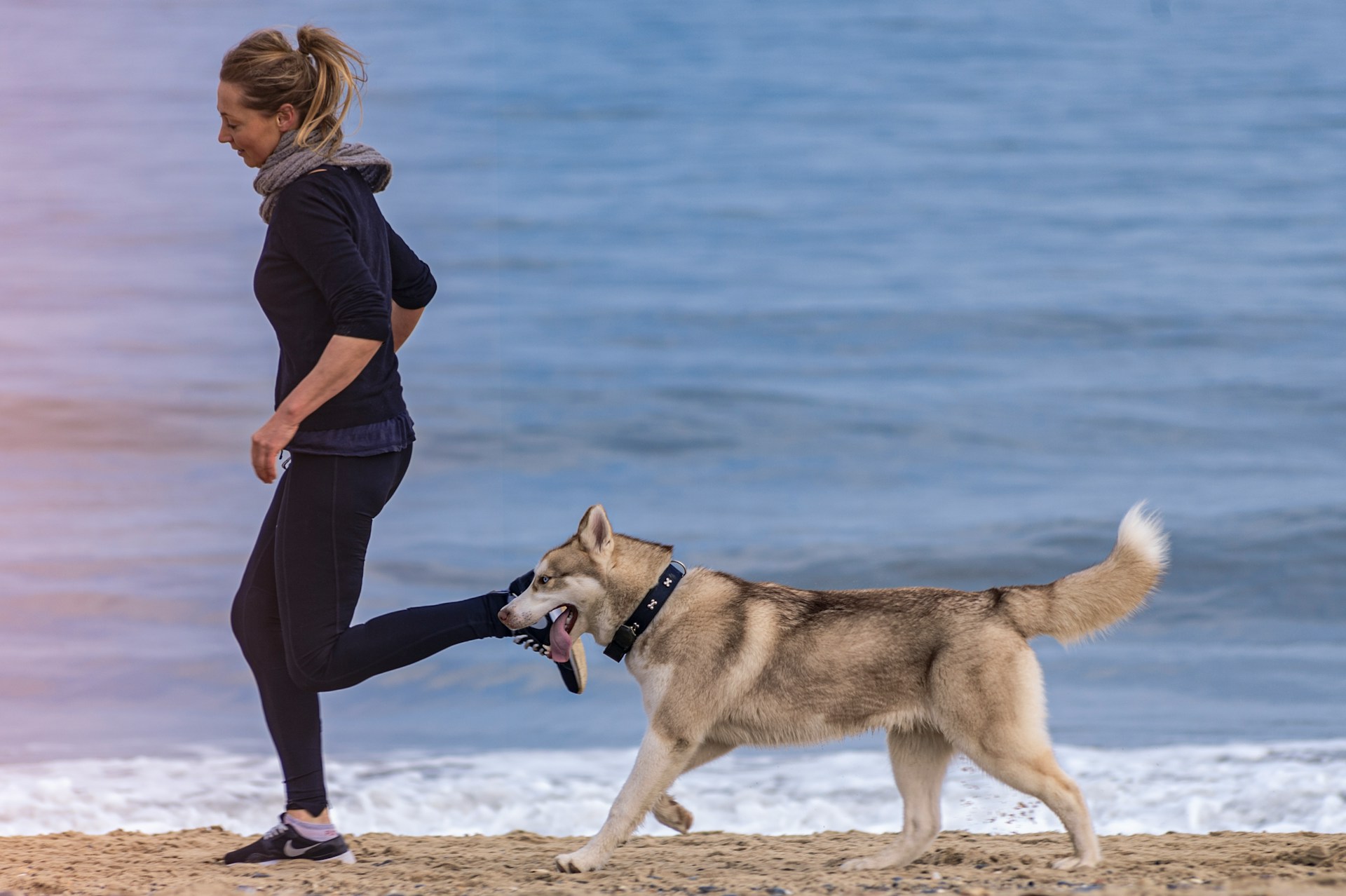Running with your dog may be a fulfilling activity that provides you and your dog health advantages, outside air, and quality time together. But, it’s crucial to make sure your pet is secure and at ease while you go on runs. Here are some essential pointers to ensure you and your dog have fun and safe running routines.
-
Examine Your Dog’s Condition
You should always make sure your dog is physically fit for jogging before you start doing it with them. Make an appointment for your dog to get a veterinarian checkup to ensure that they are well and suitable for jogging. Older dogs, puppies, and some breeds with short noses (such as pugs and bulldogs) may not be suitable for running long distances due to their physical limitations).
-
Build up Gradually
Canines and humans alike must develop their stamina. Initiate slower, shorter runs to give your dog time to become used to the action. As your dog gets more comfortable running, gradually increase both the distance and the effort. This methodical development guarantees that your dog will enjoy the exercise and helps prevent injuries.
-
Make Use of the Proper Tools
The safety and comfort of your run can be significantly improved by wearing the appropriate equipment. Invest in a harness that fits your dog properly so that it may move about freely without experiencing strain on their neck. Retractable leashes should not be used since they might be challenging to manage when running. Rather, use a hands-free leash that fastens to your waist, giving you better control while keeping your hands free.
-
Be Aware of the Weather
Dogs are more weather-sensitive than people are. It’s crucial to avoid letting dogs run in the warmest part of the day since they can easily become overheated in hot weather. Select milder hours, like early in the morning or late at night, and make sure your dog drinks enough water. Short-haired dogs can require a dog coat in the winter to remain warm. Always check the temperature of the pavement since ice conditions can lead to slips and accidents and hot asphalt can burn your dog’s paws.
-
Look Out for Overheating or Fatigue Signs
Observe your dog’s behavior closely while you’re out on a run. It’s necessary to slow down or stop if they begin to exhibit symptoms of discomfort, pant excessively, or fall behind. For dogs, overheating may be deadly, so if your dog appears uncomfortable, you should stop right away. Always have water with you and your dog, and stop often to relax and drink.
-
Select Dog-Friendly Paths
Choose for your dog safe and fun jogging paths. Steer clear of crowded walkways, busy highways, and places with uneven ground that might damage your dog’s paws. You should take your dog for runs on calm residential neighborhoods, parks, and trails. In addition, always be aware of other runners, cyclists, and pedestrians, and keep your dog on a leash when necessary.
-
Show Off Your Manners
It’s crucial to exercise excellent etiquette when running with your dog to make sure that everyone has fun. Teach your dog to run behind you so that it doesn’t pull or run off in the face of distractions. To maintain control and proximity with your dog, use instructions such as “stay” or “heel”. Consistently tidy up after your dog and show consideration for other people and pets you may encounter on your run.
-
Have Fun with It
You and your dog should love going on runs together. Make playtime a part of your daily routine by taking your dog for a brief game of fetch to a park or letting them explore a new place. Treats and praise positive reinforcement can excite your dog to run and support appropriate behavior.
Conclusion
Running with your dog may be a great way to maintain an active lifestyle and improve your relationship. You may design a pleasant and healthful jogging regimen that you and your dog will look forward to by using these suggestions and keeping your dog’s safety and well-being in mind. So fasten your shoes, take your leash, and let’s go for a run on the path.

